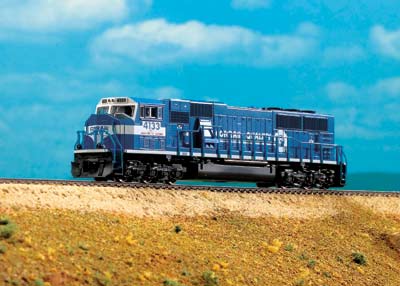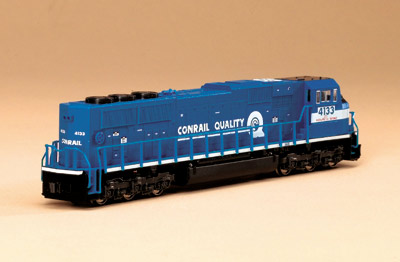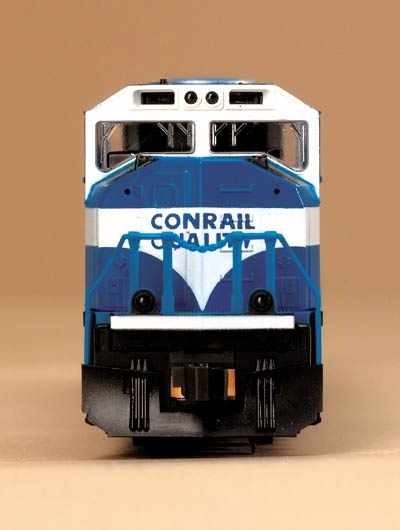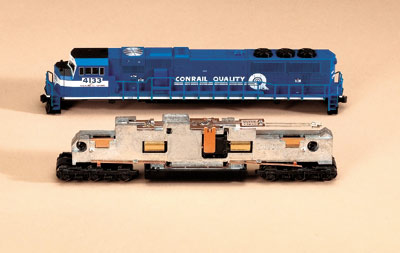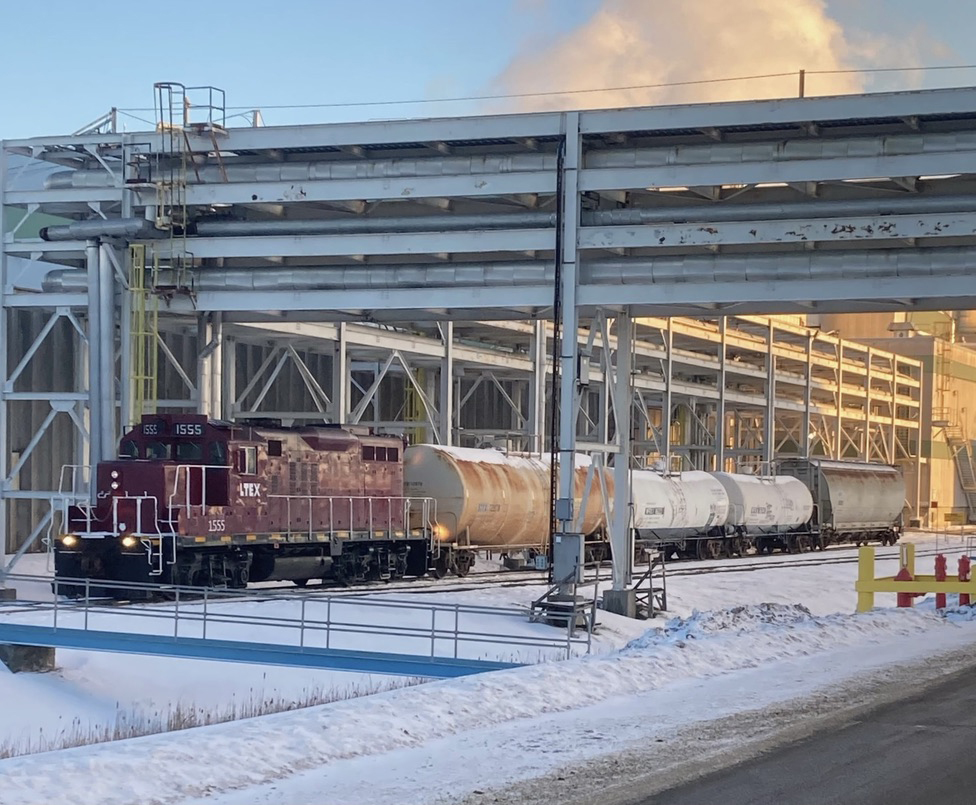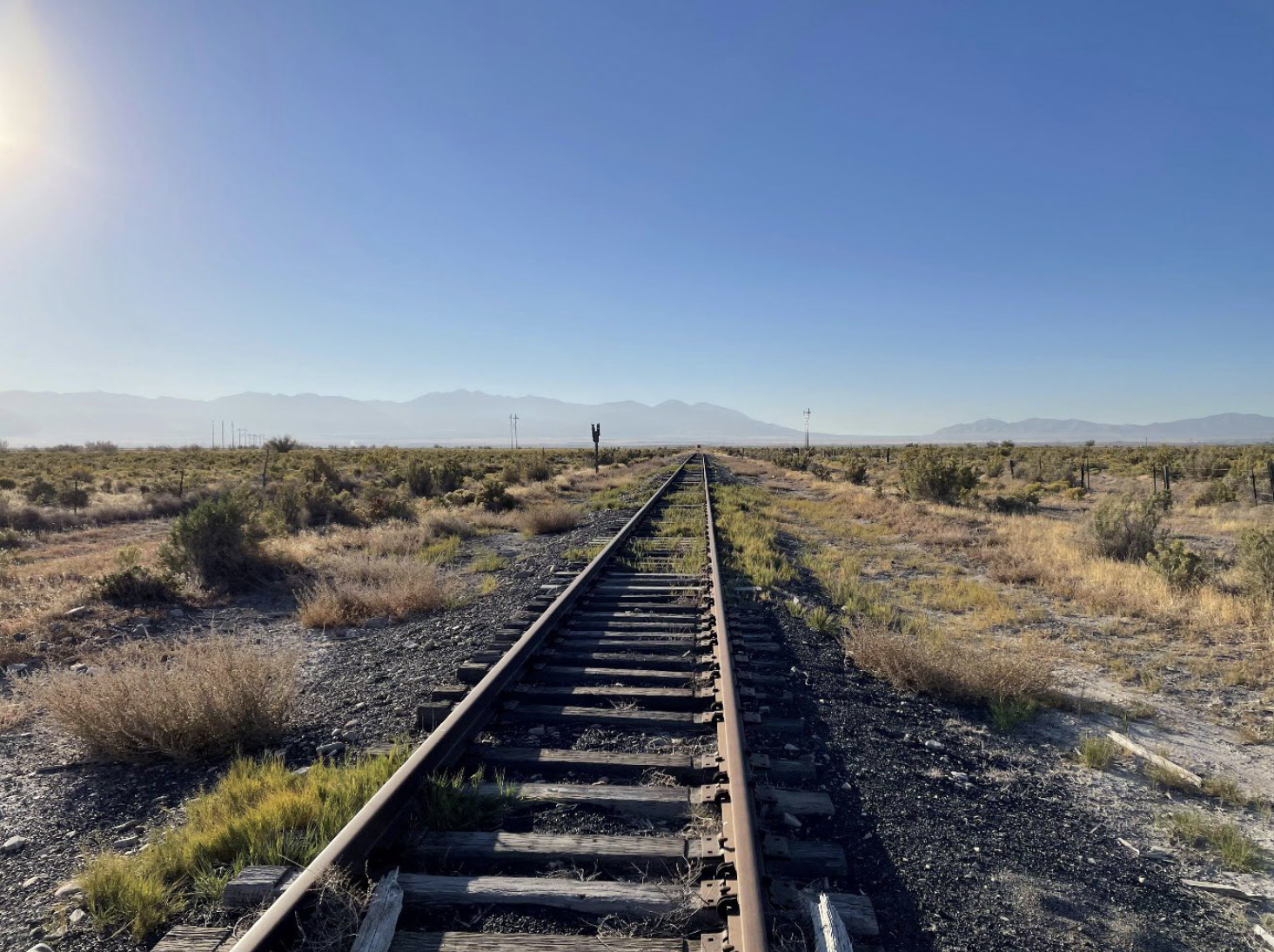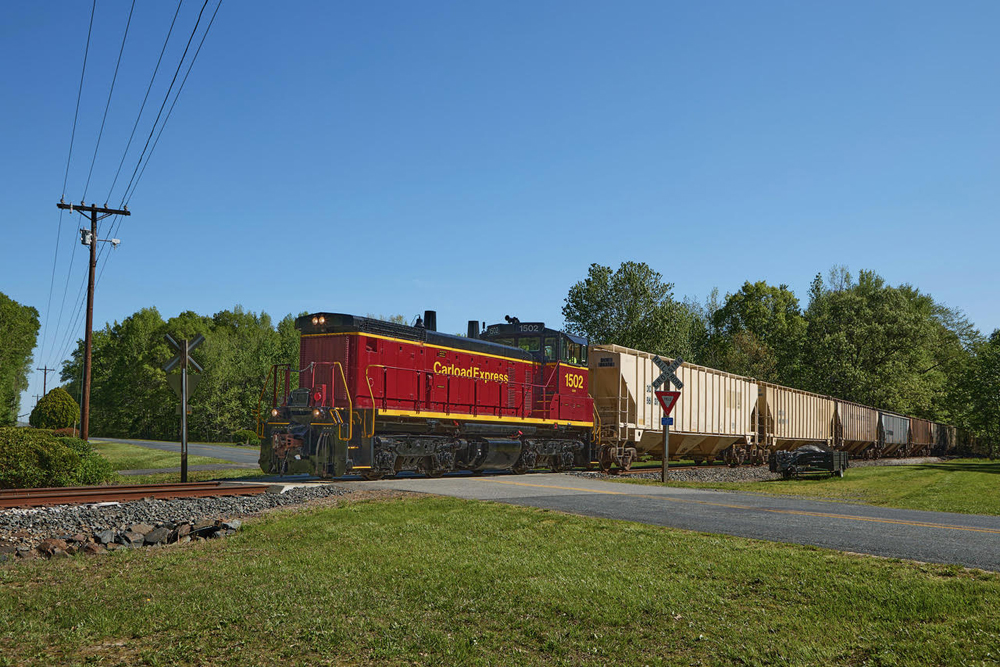Introduced in late 1993, more than 867 of these heavy-duty 4,000-hp locomotives have been built by the General Motors Locomotive Group (Electro-Motive Division). The MAC designation indicates the units have a Modified North American safety cab and AC transmission. They weigh 415,000 pounds. Burlington Northern Santa Fe owns the biggest fleet with 777 SD70MACs on its roster.
Kato’s SD70MAC closely matches the prototype plan in the May 1999 Railroad Model Craftsman. The Field Guide to Modern Diesel Locomotives, by Greg McDonnell, (Kalmbach Books), explains more about the history and development of EMD’s line of heavy- duty road diesels.
Our sample model came ready to run with a couple of sprues containing the number boards, front grab irons, and rear m.u. cables tucked into one end of the box. These details press-fit into holes in the body.
A two-sided 7 1/8″ x 10 1/8″ instruction sheet includes exploded isometric drawings of the locomotive assemblies and a parts list. The only tools required are nippers to trim the small parts off the sprues and a pair of small serrated-jaw pliers to gently press the parts into the holes. Cement is not necessary.
The body shell is made up of 13 interlocking pieces. Most of these parts are molded in color. The body shell is smoothly painted with sharply printed lettering. Clear window inserts are provided for the cab, and several tiny concealed latches lock the various body parts together. Small detail parts are press-fitted into holes in the body.
The SD70MAC’s running gear is a stretched version of Kato’s split-frame design. The frame halves are cast zinc alloy to provide some weight for traction. A Kato can motor, with a pair of turned-brass flywheels, drives the gearboxes in the six-wheel trucks. The scale 45″-diameter nickel-silver drivers and wheelsets match the National Model Railroad Association standards gauge.
A printed circuit board on top of the motor carries the model’s white LED headlights and their control circuit. Clear-plastic light guides provide working ditch lights. The motor is isolated and there’s room for a DCC decoder, though a receptacle isn’t provided.
Our sample SD70MAC performed smoothly, but seemed a little stiff at first. It started and ran steadily on 2 volts at 6.8 scale miles per hour, but I expect this will drop after the model is run for a while. The model’s drawbar pull is equivalent to 24 free-rolling freight cars on straight and level track.
The model ran smoothly on a tight 9″ minimum radius, but it looks much better on 11″ or large radii where the overhang is reduced.
Kato knuckle couplers are mounted at the correct height in boxes attached with clips at each end. The metal “air hoses” which actuate the couplers are supplied separately, so they also need to be pressed into place. A pair of longer couplers are also provided for operation on tight-radius curves.
This model certainly lives up to Kato’s reputation for detail and performance. I’m sure modelers of contemporary railroading will enjoy these heavy- duty diesel locomotives.
Price: $105.00 each
Manufacturer:
Kato U. S. A. Inc.
100 Remington Rd.
Schaumburg, IL 60173
www.katousa.com
Description:
Plastic and metal locomotive
Features:
Drawbar pull: 1 ounce
Dual flywheel drive
Engine weight: 4.25 ounces
Kato magnetic knuckle couplers
Minimum radius 9″ (without cars)
Six-axle drive and electrical pickup
White LED constant directional
headlights and ditch lights
Road names:
Burlington Northern Santa Fe
(dark green and cream or orange and green schemes); Conrail; CSX (Bright Future scheme), undecorated





